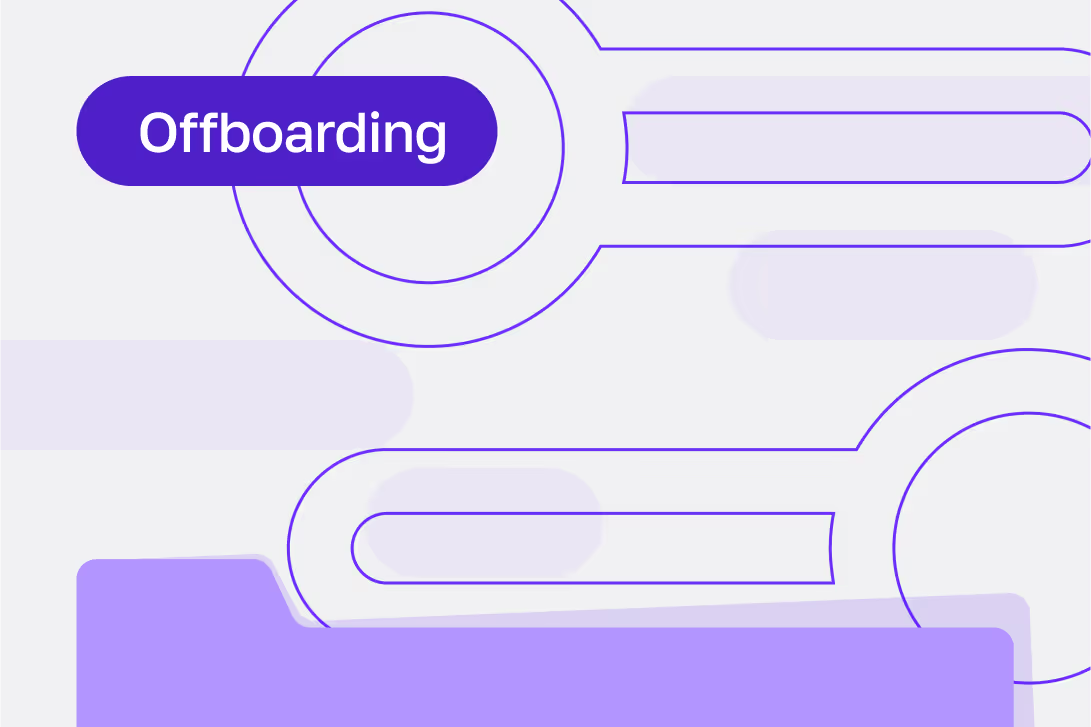Managing IT costs: 7 ways to save big without cutting corners


Listen to this blog as a podcast

.png)
Ever checked your credit card and realized you’re still paying for a “free trial” you forgot to cancel? IT budgets often feel the same way — except with six-figure consequences.
Hidden redundancies, outdated tools, and ticket queues packed with avoidable requests quietly eat up time and money. And when every request goes through the same overloaded help desk, even routine tasks start to feel expensive.
The good news: you don’t need a budget overhaul to fix it. Managing IT costs is about spotting the inefficiencies hiding in plain sight — things like duplicate tools, repetitive tickets, or outdated workflows that need refreshing. And you can clean them up without sacrificing service.
Here are seven proven strategies that will help you rethink your approach to support, use your ticket data more effectively, and free up your team to work on what matters.
1. Start with the ticket log, not the budget spreadsheet
If you want to lower IT costs, don’t start with headcount. Start with the ticket queue.
Most teams are drowning in requests, but not all of them need to exist in the first place. When you analyze your ticket log, patterns emerge: repetitive tasks, policy gaps, and preventable issues. That’s where the real savings hide.
Audit the last 30 days of requests and look for:
- Tickets that repeat weekly or monthly (think password resets or app access)
- Requests that bounce between teams or get reopened frequently
- Long wait times on low-complexity tasks
For example, one customer we talked to realized 20% of their tickets were access requests stuck in manager approval limbo. By updating the playbook to include pre-approved software bundles, we cut turnaround time from 3 days to 1 hour — and saved hours of analyst time each week.
When you can see what’s slowing your team down, you can prioritize what to fix, automate, or prevent. Fixify’s help desk analysis makes it easier to surface these patterns fast.
The ticket log tells a much better story than your budget sheet. So, before you trim people or platforms, diagnose the actual friction.
2. Too many tools? Time to clean out the junk drawer
Every IT team has one: the software junk drawer. Tools you bought three years ago that no one remembers. Overlapping platforms with unclear owners. Add-on tools that sound great in theory but create more friction than they solve.
If your team is juggling multiple ticketing systems, communication tools, or password managers, you’re probably losing more than just money. Efficiency is also taking a hit.
Here’s why it matters: duplicate licenses quietly inflate your IT budget without adding value. Constant context-switching between overlapping tools drains productivity and frustrates your team. And when those systems don’t talk to each other, your data ends up scattered, making it harder to get a clear picture of what’s happening.
Managing IT costs here means cleaning house. Audit your stack and look for opportunities to reduce waste.
These types of changes — cutting redundant tools and tightening workflows — are part of how companies successfully reduce overhead costs without compromising performance. Replace bloated platforms with leaner tools, or partner platforms that bring everything under one roof.
3. Automate the easy stuff, keep people for the hard stuff
Not every ticket needs a human. And not every task should be automated.
The sweet spot? Automate repetitive, repetitive, low-stakes tickets — think password resets and software installs. Leave humans in the loop for high-context, high-stakes work — like security approvals or complex onboarding.
Thoughtfully automating the easy stuff frees up time and preserves quality. It also lets your team focus on what really needs their input.
Fixify’s model strikes that balance: we resolve 75% of Tier 1 and Tier 2 tickets with AI-driven workflows and trained analysts on standby. That means fewer escalations, faster resolutions, and more time for your team to focus on strategic projects.
This lines up with Gartner's 2025 prediction that AI will autonomously handle 80% of common customer service issues by 2029 — a shift that's already starting to reshape how IT teams allocate their time.
4. Your internal help desk is more expensive than you think
The sticker price of an internal help desk doesn’t reflect the real cost.
When you factor in training, tools, management overhead, and turnover, the true cost of running an internal help desk is often 2–4x higher than expected.
It adds up fast — especially when:
- Your analysts spend time on repetitive tickets
- Your SLA tracking is manual or incomplete
- Your queue grows faster than your team can hire
Fixify helps companies with 100 to 2,000 employees resolve their help desk tickets without expanding their IT team. One customer cut their ticket backlog by 85% while keeping their existing staff focused on projects — not password resets.
Wondering how other companies have cut IT costs without compromising support? Learn why teams switch to Fixify when internal help desks become too expensive to manage efficiently.
5. Metrics that actually help you spend smarter
Tracking everything doesn’t help. Tracking the right things does.
Focus on metrics that show you where the friction is — and where costs creep in:
- Time to resolution: How long does it take your team to close a ticket once it's been submitted? Shorter times generally mean more efficient workflows and happier end users, but only if resolution quality stays high.
- SLA adherence: Are you meeting your agreed service levels? Tracking this ensures that urgent issues receive the necessary attention and that internal expectations align with actual performance.
- Ticket reopen rate: How often do users come back with the same issue? A high reopen rate typically indicates poor first resolution quality, inadequate follow-up, or incomplete documentation.
- Sentiment: This should be tracked passively — not just with CSAT surveys. Passive sentiment analysis gives you a real-time read on how users feel about your service, without constantly prompting them for feedback. Blending sentiment with CSAT provides IT teams with more nuanced feedback, eliminating the need to overload users with surveys.
Fixify brings all of these together into one place to make budgeting easier. When you can see where the friction is, you can fix it — without over-hiring or guessing.
6. Stop burning talent on tickets that don’t move the business
If your senior engineers are stuck updating printer drivers or creating email aliases, you’re wasting their potential — and your budget.
The opportunity cost is real. Every hour spent on low-value tasks delays higher-impact work like: rolling out a new identity provider, upgrading the systems architecture, or securing sensitive systems against the latest ransomware attack.
Worse, this kind of ticket churn drives burnout. Your most skilled team members want to solve real problems—not babysit the help desk ticket queue. And when IT starts delivering more strategic value, its internal reputation gets a well-deserved lift.
Fixify offloads the repetitive stuff so your internal talent can focus on work that actually drives business value. The result? Happier employees, better retention, and faster progress on key initiatives.
7. Shift to proactive IT, not just reactive triage
Reactive support models can lead to higher IT costs. Something breaks, someone submits a ticket, someone else fixes it.
But true efficiency gains come from solving problems before they generate tickets.
This might look like:
- Auto-provisioning tools and accounts during onboarding
- Publishing easy-to-search internal guides or playbooks to reduce tickets
- Routing common approval requests through Slack workflows
Fixify helps companies move from triage to prevention by analyzing patterns in ticket data, building smart playbooks, and automating fixes before they escalate.
One Fixify customer used our analytics to uncover that 30% of weekly tickets stemmed from poor onboarding setup. With smarter automation and better documentation, they dropped that number by half — no new headcount needed.
This mindset — solving issues before they generate a ticket — is at the heart of proactive IT. Fixify’s IT infrastructure solutions enable teams to build smarter systems that scale without being overwhelmed by requests.
Want to cut IT costs without sacrificing service?
Managing IT costs isn’t about cutting corners. It’s about cutting the clutter.
Fixify helps IT teams work tickets with care, automating repetitive work, surfacing impactful insights, and giving your analysts space to work on what matters most.
Book a demo today and start exploring how Fixify can transform your help desk from a cost center into a strategic asset.
Related articles
.png)
IT vs engineering: What’s the difference (and why it matters)


A quick offboarding checklist for tech companies


A founder’s take: Navigating building products in the new generative AI world

Stay in the loop

Sign up to get notified about our latest news and blogs
.png)